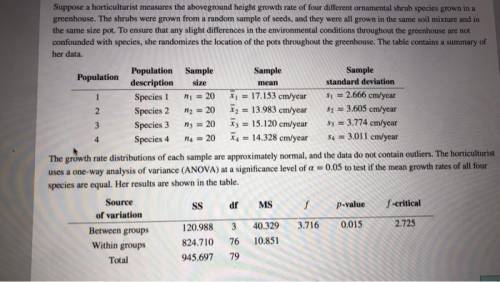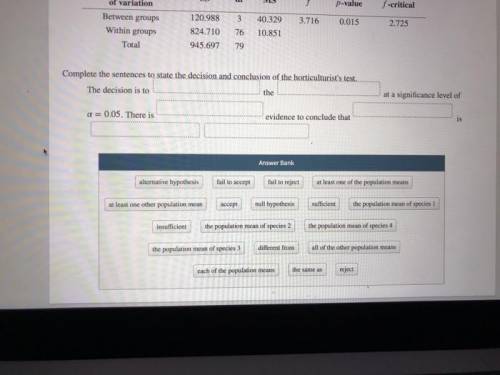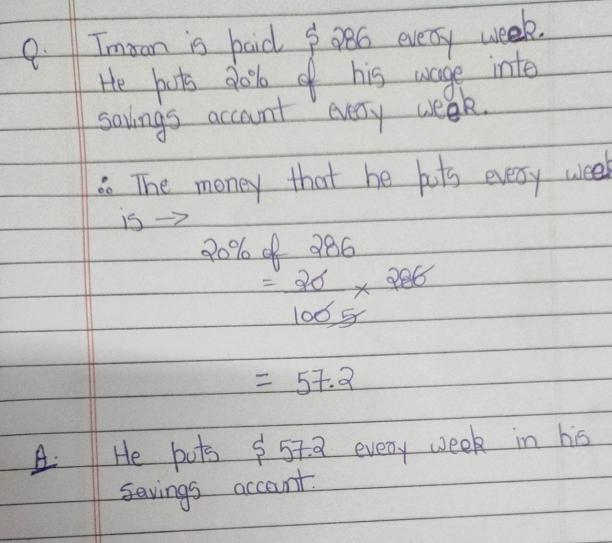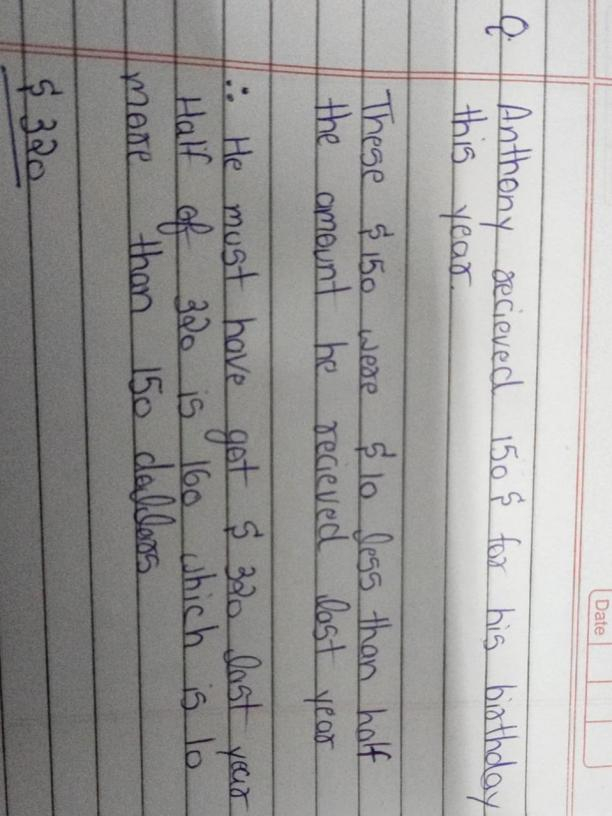1) Percentages of scores less than 100: 50%
2) Percentage of scores less than 140: 97.5%
3) Percentage of scores less than 80: 16%
4) Percentage of scores between 80 and 120: 68%
5) Percentage of scores between 80 and 140: 81.5%
1) Percentage of rates less than 70 : 50%
2) Percentage of rates less than 55 : 16%
3) Percentage of rates less than 85 : 97.5%
4) Percentage of rates greater than 85 : 2.5%
5) Percentage of rates greater than 55 : 84%
6) Percentage of rates between 55 and 100: 81.5%
7) Percentage of rates between 70 and 100: 47.5%
Step-by-step explanation:
We have a random variable normally distributed with a mean of 100 and a standard deviation of 20.
1) Percentages of scores less than 100: 50%
As the mean is 100, 50% of the data lies below 100.
2) Percentage of scores less than 140: 97.5%
The data is what lies below (mean +2 sd). In this case, applies the 95% rule for the higher scores (above 100), which means we have 95/2=47.5 of the data between 100 and 140.
The data below 100 represents 50%.
So the scores under 140 are 50+47.5=97.5%.
3) Percentage of scores less than 80: 16%
The scores under 80 are a (mean-1 sd).
This means that is half of the data, less 68/2=34 (the area that is under the first standard deviation of the mean and the mean).
Then, the scores under 80 are 50-34=16%.
4) Percentage of scores between 80 and 120: 68%
The scores are under one deviation of the mean (to both sides). The 68% rule applies.
5) Percentage of scores between 80 and 140: 81.5%
The lower scores, between 80 and 100 are in the area between one deviation and the mean, so it has a percentage of 68/2=34%.
The higher scores are 2 deviations frome the mean, so they have 95/2=47.5% of the scores.
Between 80 and 140 are 34+47.5=81.5% of the scores.
1) Percentages of scores less than 100: 50%
2) Percentage of scores less than 140: 97.5%
3) Percentage of scores less than 80: 16%
4) Percentage of scores between 80 and 120: 68%
5) Percentage of scores between 80 and 140: 81.5%
1) Percentage of rates less than 70 : 50%
2) Percentage of rates less than 55 : 16%
3) Percentage of rates less than 85 : 97.5%
4) Percentage of rates greater than 85 : 2.5%
5) Percentage of rates greater than 55 : 84%
6) Percentage of rates between 55 and 100: 81.5%
7) Percentage of rates between 70 and 100: 47.5%
Step-by-step explanation:
We have a random variable normally distributed with a mean of 100 and a standard deviation of 20.
1) Percentages of scores less than 100: 50%
As the mean is 100, 50% of the data lies below 100.
2) Percentage of scores less than 140: 97.5%
The data is what lies below (mean +2 sd). In this case, applies the 95% rule for the higher scores (above 100), which means we have 95/2=47.5 of the data between 100 and 140.
The data below 100 represents 50%.
So the scores under 140 are 50+47.5=97.5%.
3) Percentage of scores less than 80: 16%
The scores under 80 are a (mean-1 sd).
This means that is half of the data, less 68/2=34 (the area that is under the first standard deviation of the mean and the mean).
Then, the scores under 80 are 50-34=16%.
4) Percentage of scores between 80 and 120: 68%
The scores are under one deviation of the mean (to both sides). The 68% rule applies.
5) Percentage of scores between 80 and 140: 81.5%
The lower scores, between 80 and 100 are in the area between one deviation and the mean, so it has a percentage of 68/2=34%.
The higher scores are 2 deviations frome the mean, so they have 95/2=47.5% of the scores.
Between 80 and 140 are 34+47.5=81.5% of the scores.
Answer:
Yes, you don't use a pooled variance and you recompute the degrees of freedom so that the resulting df is smaller.Step-by-step explanation:
Yes, you don't use a pooled variance and you recompute the degrees of freedom so that the resulting df is smaller.
Complete Question
The complete question is shown on the first uploaded image
The decision is to reject the null hypothesis at a significant level of significance  There is sufficient evidence to conclude that at least one of the population mean is different from at least of the population
There is sufficient evidence to conclude that at least one of the population mean is different from at least of the population
Step-by-step explanation:
From the question we are told that the claim is
The mean growth rates of all four species are equal.
The null hypothesis is

Th alternative hypothesis is

From question the p-value is 
And since the  so the null hypothesis will be rejected
so the null hypothesis will be rejected
So
The decision is to reject the null hypothesis at a significant level of significance  There is sufficient evidence to conclude that at least one of the population mean is different from at least of the population
There is sufficient evidence to conclude that at least one of the population mean is different from at least of the population


Complete Question
The complete question is shown on the first uploaded image
The decision is to reject the null hypothesis at a significant level of significance  There is sufficient evidence to conclude that at least one of the population mean is different from at least of the population
There is sufficient evidence to conclude that at least one of the population mean is different from at least of the population
Step-by-step explanation:
From the question we are told that the claim is
The mean growth rates of all four species are equal.
The null hypothesis is

Th alternative hypothesis is

From question the p-value is 
And since the  so the null hypothesis will be rejected
so the null hypothesis will be rejected
So
The decision is to reject the null hypothesis at a significant level of significance  There is sufficient evidence to conclude that at least one of the population mean is different from at least of the population
There is sufficient evidence to conclude that at least one of the population mean is different from at least of the population


The answer is in the image

The answer is in the image

The total nom of code that can be used is equal to 5+3 = 8
The answer is in the image

For every 8 cars there are 7 trucks
Therefore,
Cars:Truck=8:7
Answer is B)8:7

It will provide an instant answer!
